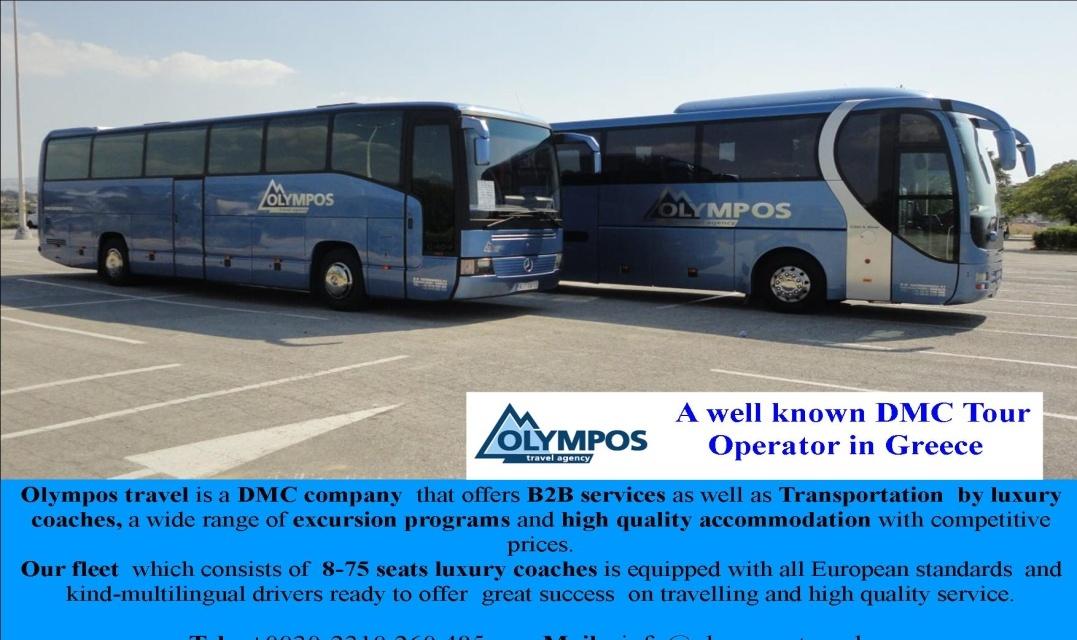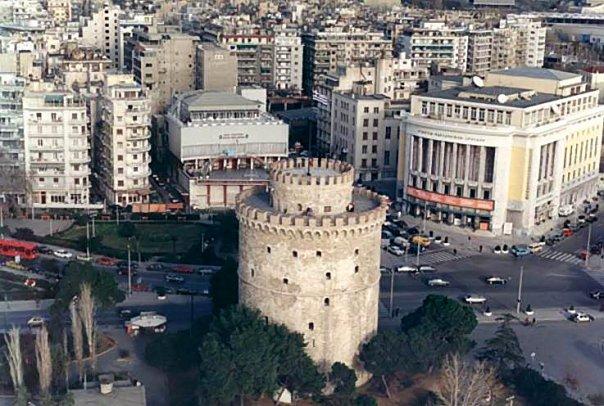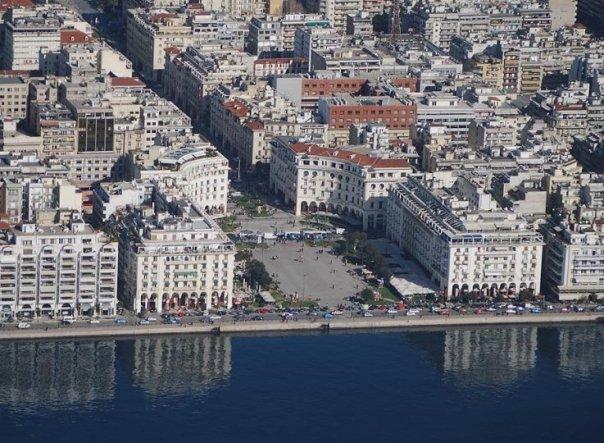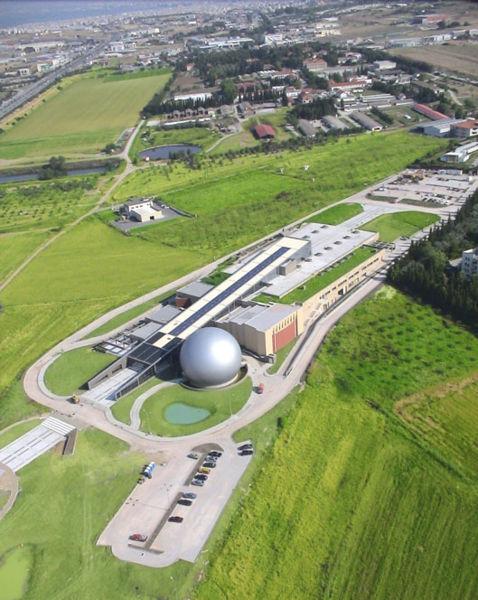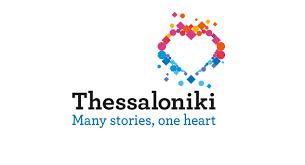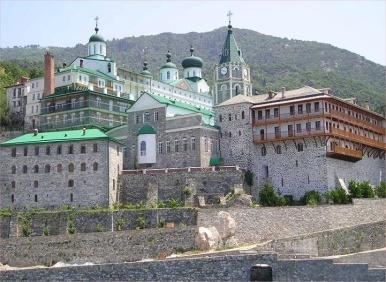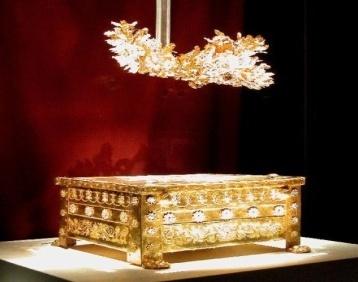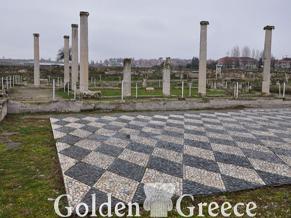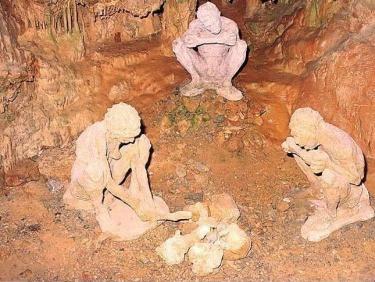JEWISH HERITAGE TOUR IN THESSALONIKI
HISTORY OF THE JEWS OF SALONICA
(search your roots )
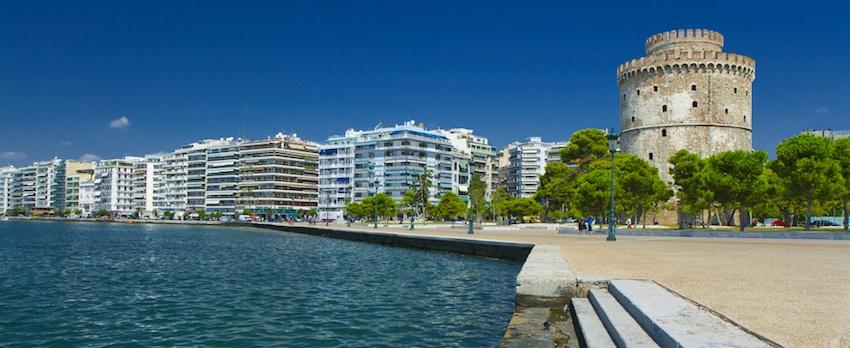
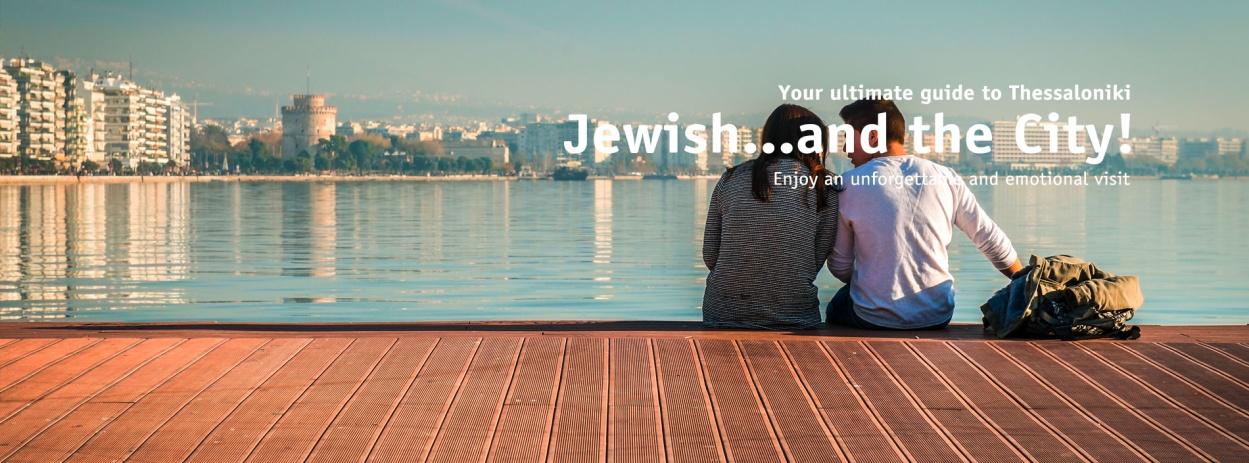
The earliest recorded Jewish presence in Greece was in the port city of Salonika. Brought to the city from Alexandria in Egypt by Alexander the Great’s brother-in-law, Kasandros, because of their expertise in maritime trade, Hellenized Jews established their community and built their first synagogue, Etz Hayyim. St. Paul preached here in the first century but was rejected by the Jews of the city.
Because of its port and its reputation as a center of trade, Ashkenazi Jews from Northern Lands, Jews from Provence France and Italian Jews from the south of Italy settled in the city, fleeing from persecutions in their own lands, but it was not until the influx of Sephardic Jews in the 15th century that Salonika achieved its prominence as a “Jewish” city and was given the name “La Madre de Israel” in recognition of its eminence as a center of Jewish learning.
At the beginning of the twentieth century there were over 80,000 Jews living in Salonika, more than half the population of the city. The Jews controlled the economy of the city and had established 40 synagogues. There was no one Jewish neighborhood. So large were their numbers that they lived throughout the city. In 1917 there was a devastating fire that destroyed most of the synagogues. They would be rebuilt but the economic hardships and the uncertain climate of the now “Greek” city of
Salonika, which had become part of Modern Greece in 1912, caused many of the Jews to immigrate, most to the United States.
At the dawning of WWII there were 56,000 Jews in the city. On April 9, 1941 the Germans took over the city. About 10,000 Jews were able to flee to safer havens before the mass deportations of 1943. From March to July of 1943, over 46,000 Jews were deported to Auschwitz-Birkenau. Only 1,200 would survive. The Jewish cemetery, with over 300,000 tombstones, the earliest dating back to the 15th century, was destroyed by the Germans. Of the 36 synagogues, only Monasteriton would survive. There are now 1,200 Jews living in Salonika. There are two functioning synagogues and a chapel in the Saul Modiano Senior Home. There is a new Jewish Museum that traces the proud history of Salonikian Jewry.
1. Synagogues Monasteriton Synagogue
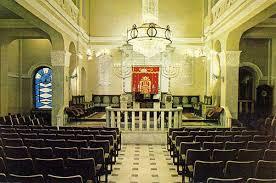
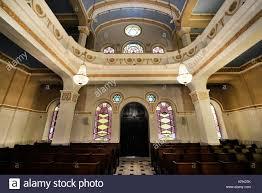
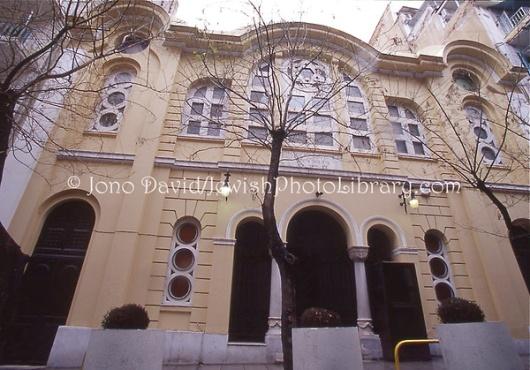
The Monasteriton Synagogue was built in 1925 by Jews from Monastir in the Former Yugoslavia. Influenced by modern styles, the exterior is an imposing façade with a prominent Mogen David in the façade. The interior is similar to that of Beth Shalom in Athens with the Tevah and Echal joined by a raised platform. Subdued colors and imposing marble columns convey a feeling of dignified sanctity. The synagogue is presently undergoing restoration but can be viewed by request from the Jewish Community of Thessaloniki (Salonika). It is located at 35 Syngrou Street. The first picture below shows the exterior of the Synagogue, and the second picture shows the interior.
2. Yad Lezikaron Synagogue
The Yad Lezikaron Synagogue was constructed in 1984 out of the remains of former synagogues in Salonika. Many of the plaques from former synagogues are in the walls of the interior sanctuary, as are some of the ner tamids (lamps). The synagogue is simply constructed within a commercial building at 26 Vas. Herakleios Street. The layout is traditionally Sephardic, with the Tevah in the center and the Echal on the far eastern wall. The picture below shows the Echal.
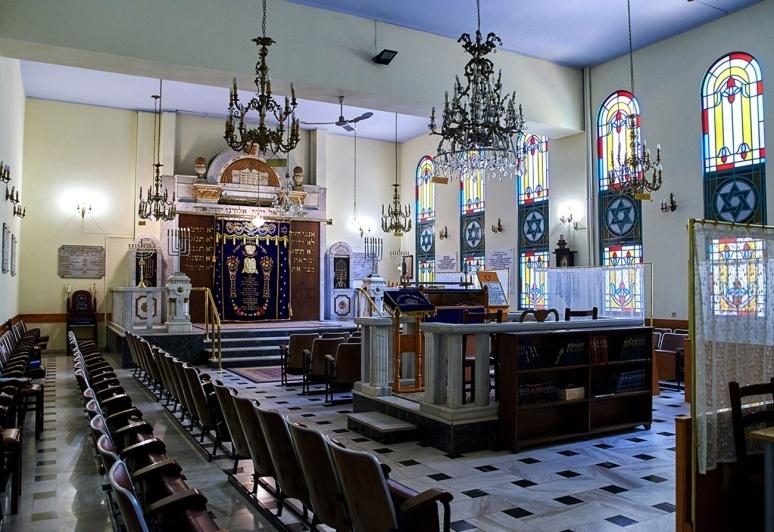
Holocaust Memorial/The Shoah Monument
Built in memory of 50.000 Jews from Thessaloniki, who died in the Holocaust. The site was chosen because it was the place where Jews were rounded up before embarking to trains for concentration camps. From 2004 thw statue of ALEKOS MENEXIADIS is been in Freedom square in the center of Thessaloniki near the port .
Jewish Cemetery
This is the second Jewish Cemetery of Thessaloniki. Its use began after the war since the old one, which was located under the present-day precincts of the University of Thessaloniki, was totally destroyed by the Nazis. In the new cemetery, some tombstones of the old one are maintained.
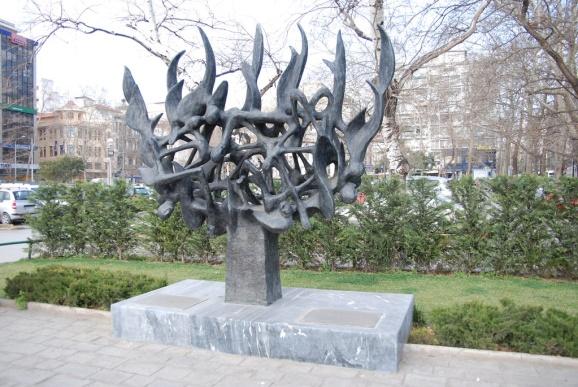
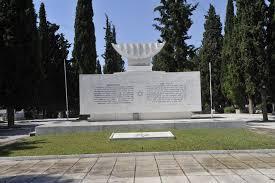
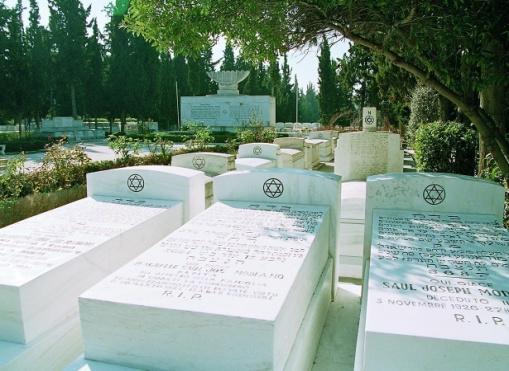
Villa Modiano -1905.
The building was built for Yako Modiano in designs by Eli Modiano. It is one of the first buildings of the famous engineer, after his return from Paris. The French influence is evident and the art-nouveau elements dominate. Typical is the trapezoidal roof with flaps. In 1913 the building was purchased by the Municipality and offered to King Constantine as a palace. It has since been used as the residence of Macedonian commanders, which is why it is known in the city as the Old Government. Later, the Military Medical School was hosted.
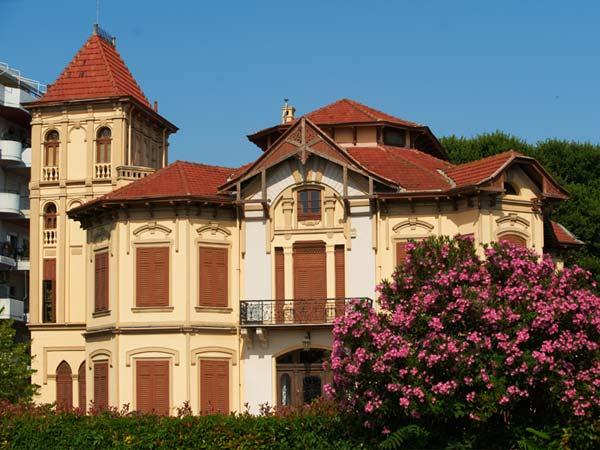
From 1970 until today it houses the Folklore and Ethnological Museum of Macedonia-Thrace and is open to the public with periodic and permanent exhibitions.
Villa Allatini
A work by the Italian architect Vitaliano Pozelli. It was built in 1888 as the summer residence of the Jewish Allatini family. Between 1909 and 1912 it was used as the prison-residence of Sultan Abdul Hammid II, who was overturned by the New Turks. In 1926 it hosted the newly founded University of Thessaloniki while during the 1940-41 War it was used as a hospital. Today, Villa Allatini houses the Prefecture of Thessaloniki offices.
The Arch of Galerius and the Rotunda with its minaret c. 299-303 CE
The Arch of Galerius (or Kamara) and the Rotunda are neighboring early 4th-century monuments in the city of Thessaloniki, in the region of Central Macedonia in northern Greece The Rotunda is also known as the Church of Agios Georgios or (in English) the Rotunda of St. George
The Jewish Museum of Thessaloniki
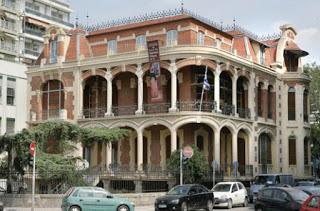
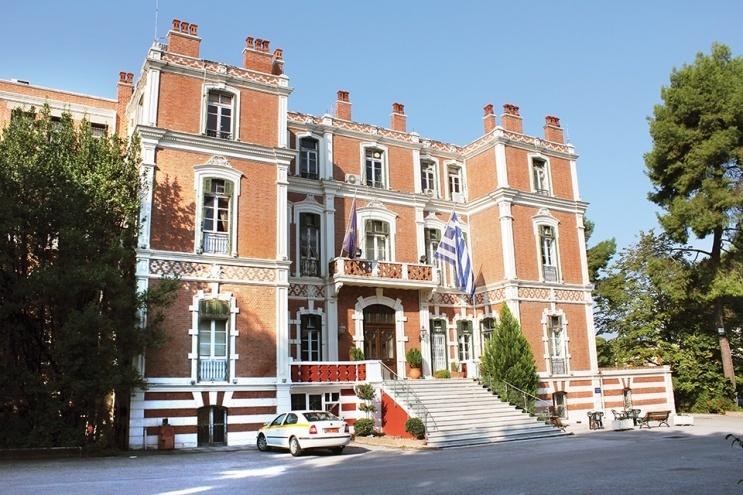
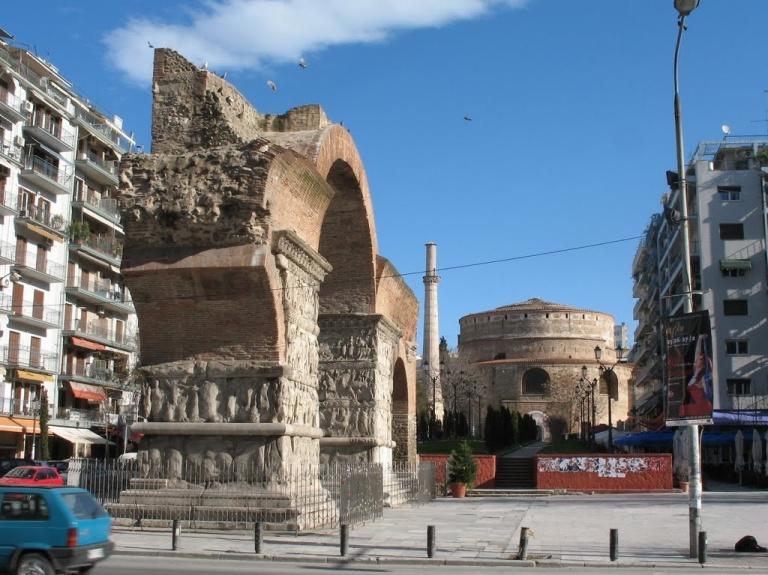
The Jewish Museum of Thessaloniki was founded to honour the rich and creative Sephardic heritage as it evolved in the city after the 15th century. Consequent to the horrible expulsion from Spain by Ferdinand and Isabella in 1492,
In academies associated with these synagogues, rabbis and mystics continued to teach the great traditions of Iberian Jewry. In the course of the following centuries, the small Jewish cemetery of the city was enlarged to accommodate the increased numbers of the deceased. By 1940 there were more than 500,000 tombs.
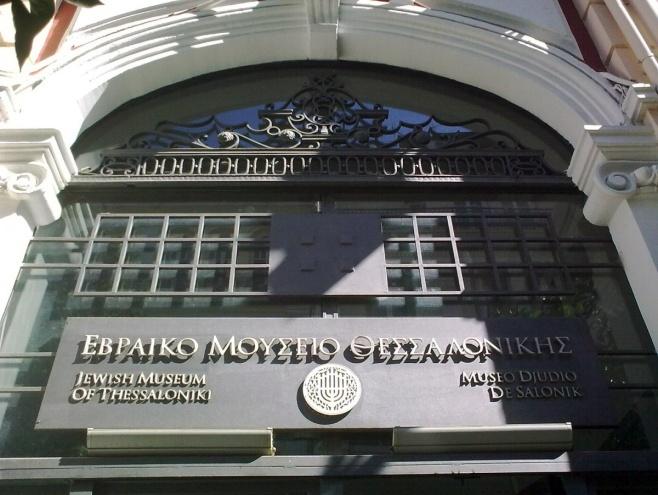
The Museum is housed in one of the rare Jewish structures that survived the fire of 1917. Located in the very heart of Thessaloniki, this imposing building has at times housed the Bank of Athens and the offices of the Jewish newspaper “L’ Independent” and is a silent witness to the great Jewish presence that once filled its streets with the language of Cervantes, redolent with the odours of the kitchens of Seville and Toledo, silent from Friday to Saturday during Shabbat. The Museum incorporates artifacts from its permanent collections, photographic exhibitions and the Simon Marks Photographic Exhibition “Thessaloniki, Sephardic Metropolis”.
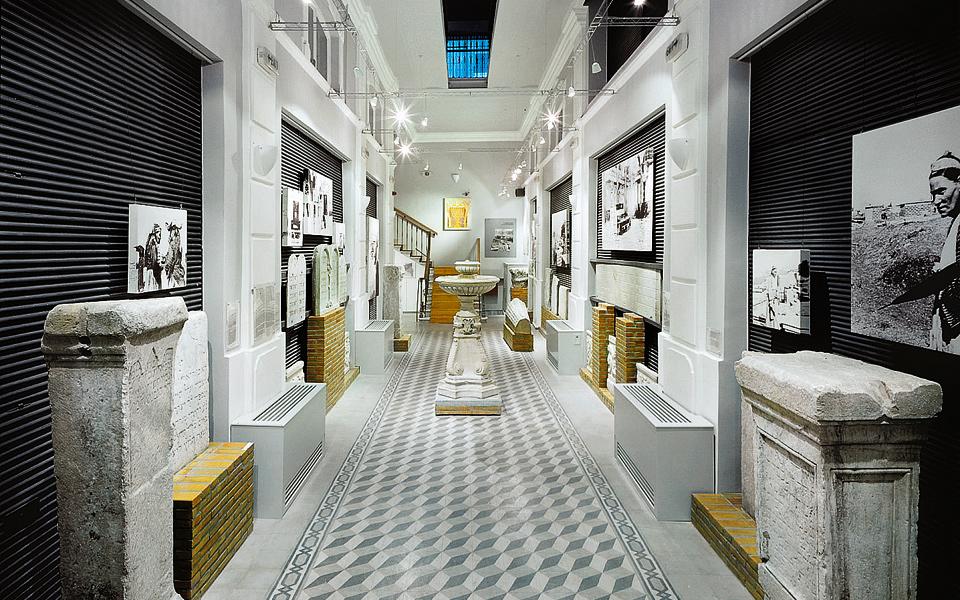
On the ground level are monumental stones and inscriptions that were once found in the great Jewish necropolis that lay to the east of the city walls. Accompanying these stones are a series of photographs showing the cemetery and visitors as it was in 1914.
Central to the first floor is a narrative history of the Jewish presence in Thessaloniki from the 3rd century BCE until the Second World War. This exhibit was designed at the kibbutz Beth Lohamei HaGettaoth in Israel and its reproduction in Thessaloniki was funded by "The Michael Marks Charitable Trust".
Complementing this exhibition, are many artifacts from the collections of the Museum, giving the visitor the chance to have an image of religious and everyday life of the prewar Jewish Community of Thessaloniki.
A separate exhibit focuses on the Shoah, as it affected the Jewish Community of Thessaloniki. The majority of the community - some 49,000 persons - was systematically deported to Auschwitz and BergenBelsen where most of them perished.
The library houses important texts that were printed in Thessaloniki from the 16th to the 20th century, covering almost every aspect of Jewish life, religious and secular.
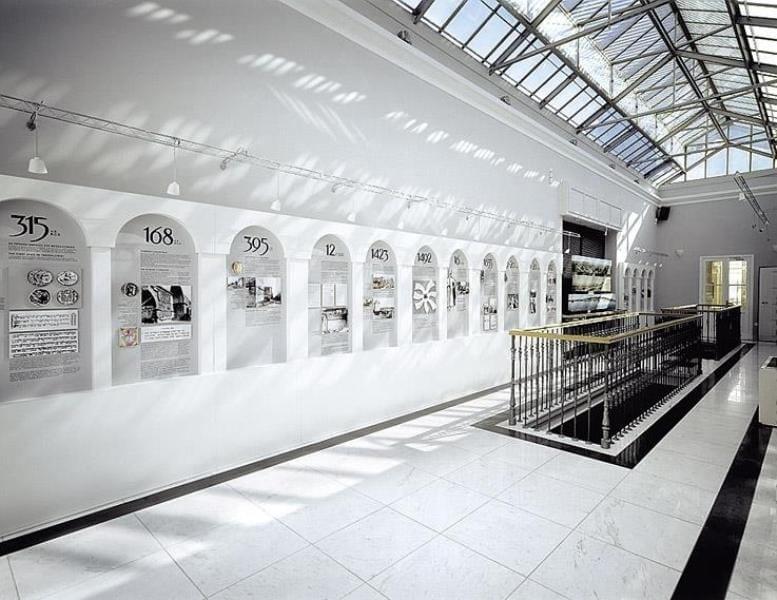
The library acts also as a repository for books on the history, customs and language of the Sephardi Jews. Adjacent to it is an audio-visual centre, in which visitors will be able to watch and research tapes and films documenting Jewish history -especially on the Holocaust.
Holocaust Museum (NEW BUILDING )
In January 2018, the preliminary works for the construction of the Holocaust Museum will begin in an area of 7,000 sq.m., at the old railway station of Thessaloniki,
Under the plan, a six-story circular building, made of metal and glass, up to 32 meters high, will be erected on the property of the former railway station, in a symbolic location from where the death trains for its 55,000 Jews began. Thessaloniki to the Nazi concentration camps
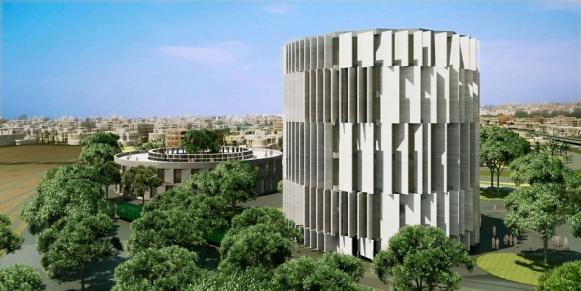
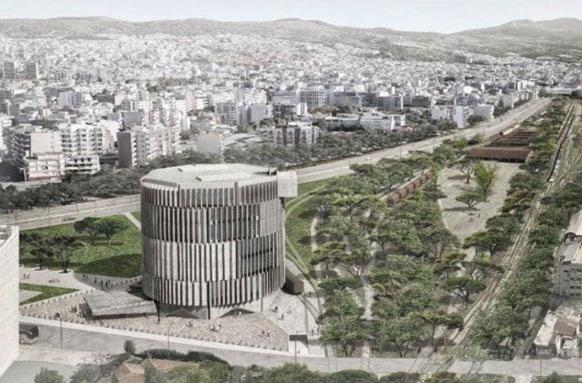
MARKET MODIANO THESSALONIKI
The building was built for Yako Modiano in designs by Eli Modiano. It is one of the first buildings of the famous engineer, after his return from Paris. The French influence is evident and the art-nouveau elements dominate. Typical is the trapezoidal roof with flaps.
In 1913 the building was purchased by the Municipality and offered to King Constantine as a palace. It has since been used as the residence of Macedonian commanders, which is why it is known in the city as the Old Government. Later, the Military Medical School was hosted.
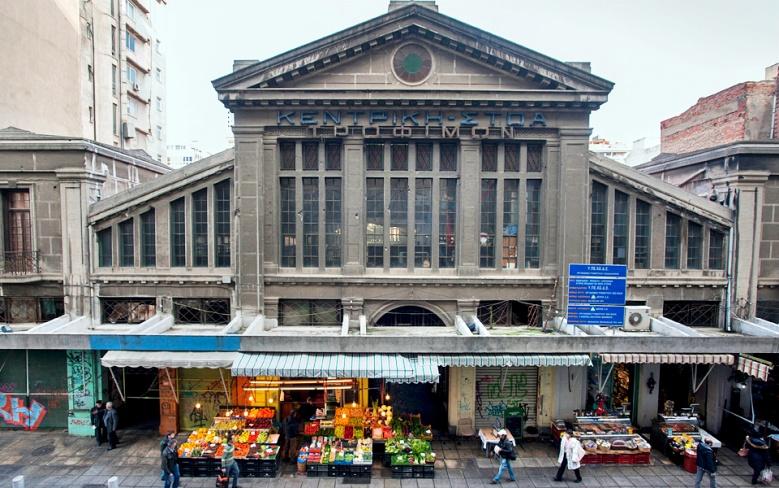
From 1970 until today it houses the Folklore and Ethnological Museum of Macedonia-Thrace and is open to the public with periodic and permanent exhibitions.
Your Jewish Thessaloniki tour ( 5-6 HOURS by a luxury car )
Will start with a luxury car and an excellent official guide and a tour leader to visit the impressive neoclassical buildings Villa Allatini, Casa Bianca and Villa Modiano , which were designed by famous architects.
Leaving back the neoclassical buildings you will head to the center of Thessaloniki, passing from Thessaloniki Byzantine Walls to admire the view of the city!
Next stop will be the oldest standing building of Thessaloniki: Rotonda was built in 306 AD as a Mausoleum or Pantheon for Emperor Galerius.
Passing right next to the famous Galerius Arch, you will soon arrive to the Jewish Museum of Thessaloniki, were you will learn about the presence of the Jewish community in Thessaloniki. Follow me through history, in the most unknown chapter of the history of my hometown. In a city which lost the most vivant part of its population during the German Occupation, you will have the opportunity to visit its most wonderful places, learn a lot about a large jewish community, and why not, meet people or even taste unique flavors.
Many people return to search their roots. You will see from Turkish baths (hamams) to synagogues, from commercial passages to fruit markets, (Modiano building ) you will enjoy a private visit in the Jewish museum and show the Shoah monument.
And all this not away from the heart of the city. Thus being able to enjoy its seafront, its Othoman and Byzantine remnants and continue with a nice clean meal in a kosher restaurant more famous in the city .

